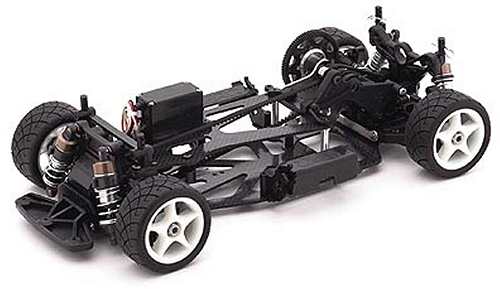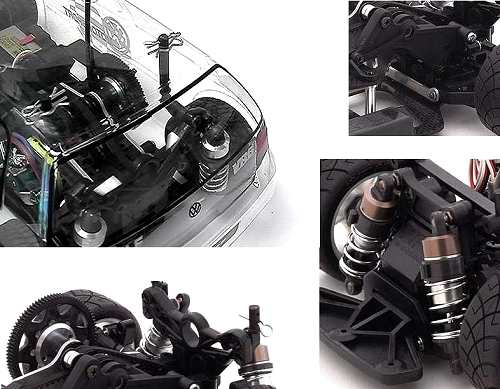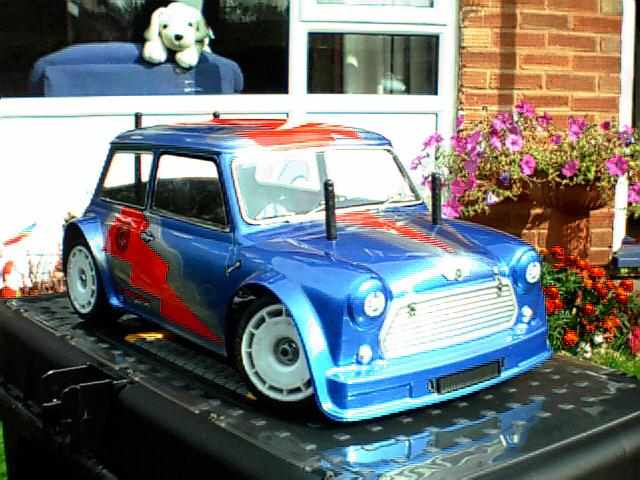

|
|
|


|
|
Maßstab 1:10 Elektro Rallye/Tourenwagen:
HPI RS4 Mini Pro - # 296 (Funkgesteuertes Modell Rezension)Geschichte + Informationen für der HPI RS4 Mini Pro::
Eingeführt von HPI (Hobby Products International) in 1999, der RS4 Mini Pro - # 296 - wurde 1999 mit einer Mazda MX-5 Miata-Karosserie geliefert.
▼ Scrollen Sie für weitere Bilder ▼
|








|
|
|

★ HPI Racing RS4 Mini Pro Chassis ★

★ HPI Racing RS4 Mini Pro ★

|
Kaufen einer Gebraucht HPI RS4 Mini Pro
|
|
Hersteller und Marken, katalogisiert und gelistet von RC-Scrapyard.
Derzeit sind die RC-Modell Hersteller, Marken und Distributoren die von uns abgedeckt werden: ABC Hobby, Academy, Acme Racing, Agama Racing, Amewi, Ansmann Racing, ARRMA, Team Associated, Atomic RC, Axial, AYK, Bolink, BSD Racing, Capricorn, Carisma, Carson, Caster Racing, Cen, Corally, Custom Works, Durango, Duratrax, ECX - Electrix, Exceed RC, FG Modellsport, FS-Racing, FTX, Fujimi, Gmade, GS-Racing, Harm, HBX, Helion, Heng Long, Himoto Racing, Hirobo, Hitari, Hobao, Hong-Nor, Hot Bodies, HPI, HSP, Intech, Integy, Jamara, JQ Products, Kawada, Kyosho, Losi, LRP, Maisto, Mardave, Marui, Maverick, MCD Racing, Megatech, Mugen, New Bright, Nichimo, Nikko, Nkok, Ofna, Pro-Pulse, Protech, PTI, RC4WD, Redcat Racing, RJ-Speed, Robitronic, Schumacher, Seben, Serpent, Smartech, Sportwerks, Step-Up, Tamiya, Team-C Racing, Team Magic, Thunder Tiger, Tomy, Top Racing, Traxxas, Trinity, Tyco, Vaterra RC, Venom, VRX Racing, WLToys, X-Factory, Xmods, Xpress, Xray, XTM, Yankee RC, Yokomo, ZD Racing und Zipzaps. |

|
Beratung und Information Elektromotoren für RC ModellenBürstenlosen Motor-Grundlagen
Die Wahl der richtigen Bürstenlosen Motor für Ihre Bedürfnisse kann eine schwierige Aufgabe für diejenigen, die mit RC Modellen sein. Wenn Sie einen lokalen Verein haben vielleicht könnten Sie einige der erfahreneren Mitgliedern für ihren Rat zu fragen, aber ein wenig Grundwissen über das Thema, so dass Sie wissen, welche Fragen zu stellen, ist immer nützlich.
|
|
Beratung und Information
Lötung
In der Sportart Radio Controlled-Rennen, es gibt eine Reihe von Dingen, die Sie lernen, Sie dort mit den besten aufstehen müssen. Eine der schwierigsten, für diejenigen mit wenig praktische Fertigkeiten, ist die Kunst der Löttechnik.
|
|
RC-Modelle:
|
Radio & Motoren: |
Andere
Zubehör: |